Hard SUP vs Inflatable SUP:
Which One to Choose?
Which One to Choose?
When it comes to paddle boards, there are countless shapes, sizes, and styles that it's no wonder it's a challenge when choosing the right one.
So, what is the difference between a hard paddle board and an inflatable paddle board?
No need to overwhelm yourself; we’ve listed the pros and cons of each to help you make the best choice for your needs.
In terms of the quality of its glide, hard paddle boards are easily first choice. Why? Because of their hydrodynamic shape, it allows us to be closer to the water. Generally, more performant than inflatable boards, they glide easily and quickly over the water and capable of gliding further and faster with only a few strokes. Made of fibre glass, they're of better quality than inflatables and are generally more durable (when properly cared for).
Category winner: hard paddle board
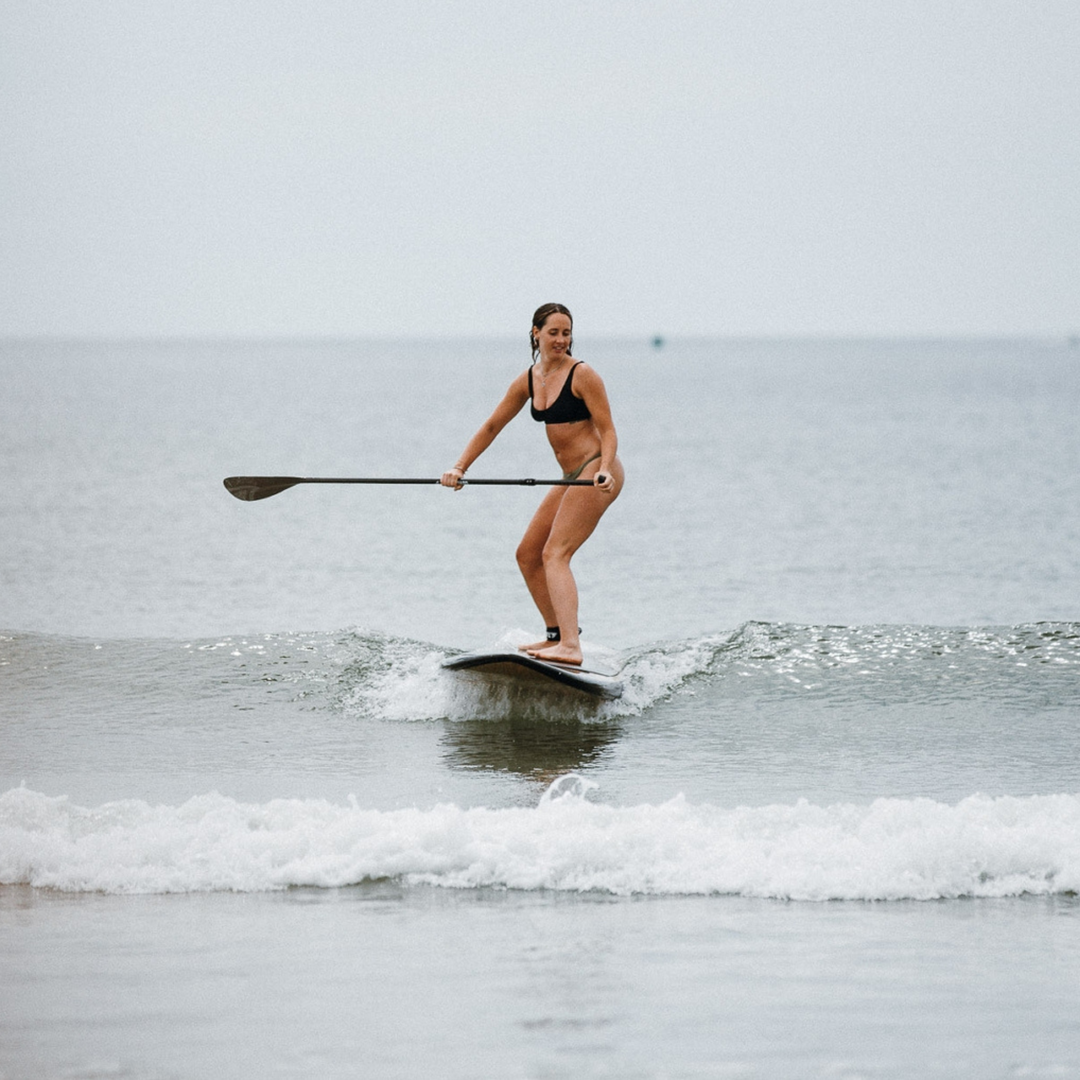

Compared to inflatable SUPs, hard SUPs are more stable because they have a larger surface area on the water. Since the inflatable board is generally thicker and has more volume, our center of gravity is higher, which slightly decreases our stability on the board. It's for this reason that TAIGA works hard to reduce the thickness of our inflatable paddle boards to 4.75 inches.
Category winner: hard paddle board
You will find many more options in terms of shape, profile, thickness, rail forms and volume with hard boards than with inflatables. Whether you want to do yoga, surf the waves, go for long rides or simply spend some time on the water in the summer, it's likely that you'll be able to find a hard SUP that'll meet your needs.
If you're a surfing enthusiast and want to try SUP surfing, you can either opt for a hard paddle board or even a SUP surf. If you're an intermediate, you can also use an inflatable board for paddle surfing, however, keep in mind that an inflatable board is less stable and considering that its shape and rails are not designed for waves, if you’re only starting out, you risk ending up with your head under water.
Despite the challenges that come with an inflatable paddle board (in terms of versatility), our team works hard to make ours as close to hard boards as we can.
✓ Our new technology X-WOVEN FUSION & STRINGER which can inflate up to 20 PSI makes our inflatable paddle boards stiffer and thinner; we continuously want to maximise the experience on the water.
✓ We develop our inflatable boards in similar shapes to our hard boards, something that's worth considering if you plan on buying an inflatable.
Category winner: hard paddle board
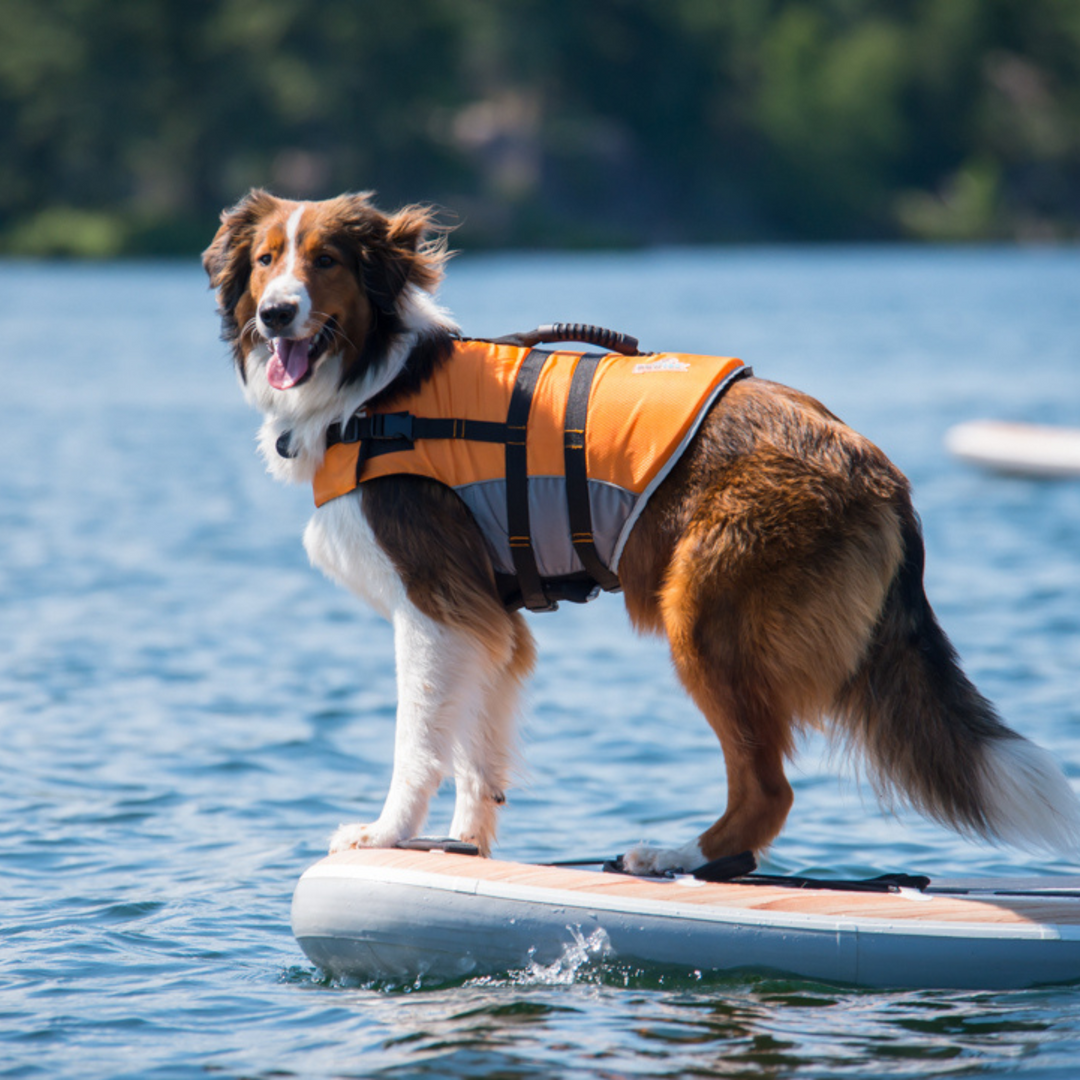

✓ If you have a garage, a basement, a shed or a wall that lacks decoration, you'll have plenty of options to store your SUP! Remember that a hard SUP cannot be left under full sun exposure in the summer or snow during the winter.
✓ If you don't have a garage, a backyard, or if you can't find the room for a hardboard in your house, the inflatable SUP is a great alternative. In its carry bag, the inflatable SUP will take up much less space. And if you want it to take half of that space (let's say you live in a van!), try our new NANO ZIP AIR 9'8'' - a compact paddle board, 2 times smaller than the regular inflatable paddle board, but just as performant and practical!
Category winner: inflatable paddle board
✓ Are you already equipped to transport your board for road trips and weekends out camping? If you have a roof rack, you're already equipped to purchase a hard SUP which will free up space in the trunk of your car. All you need is roof rack pad, tie down straps and you're good to go!
✓ If you don't have a car or your car doesn't have a rack, an inflatable board may be an easier option for you. With its transportation bag (including straps to be carried as a backpack and wheels to roll), it's super easy to carry an inflatable SUP when traveling, driving, flying or even hiking.
Category winner: inflatable paddle board
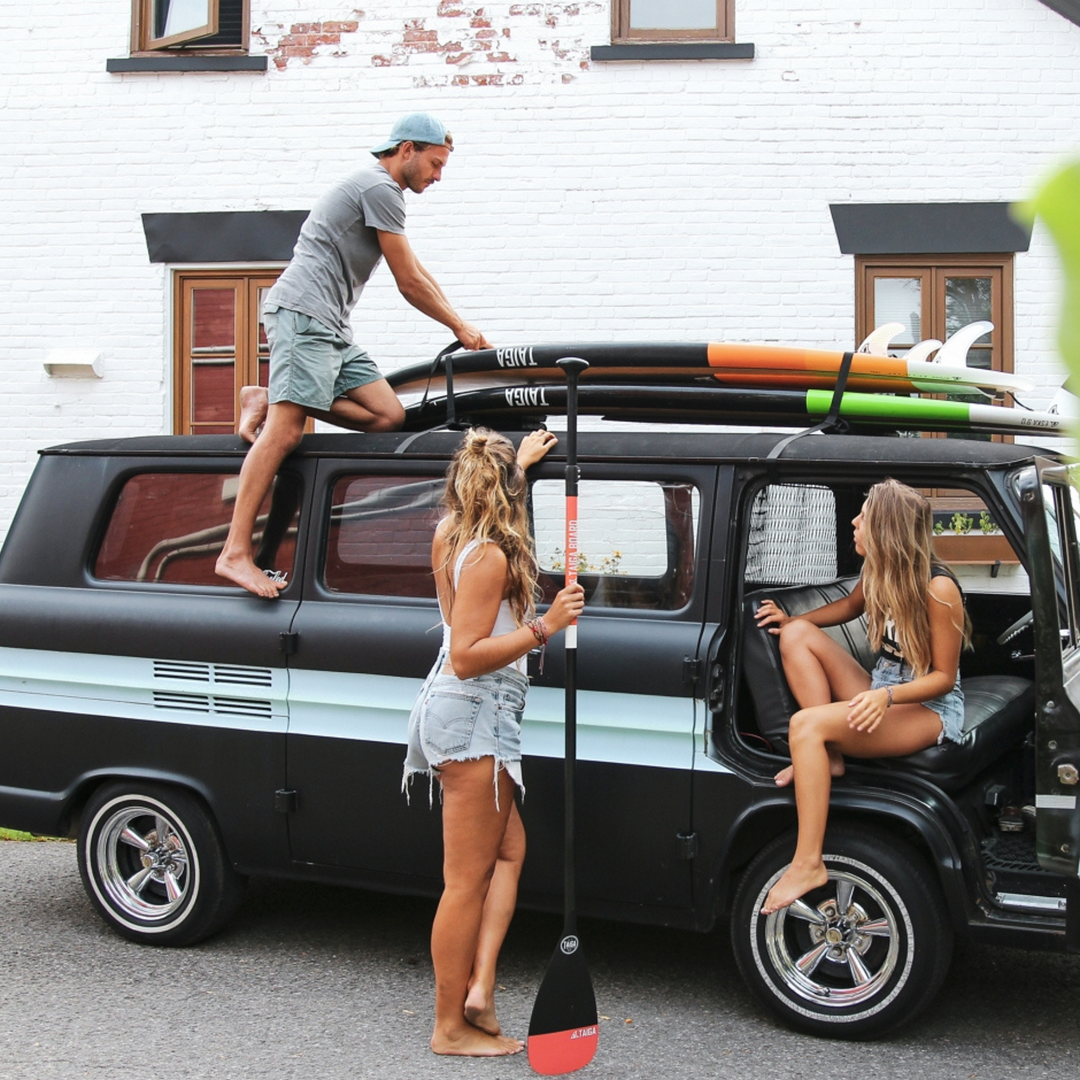
Made of fibre glass, the hard SUPs require a little more attention when handling them. Impacts on rocks, for example, can cause damage to the board, requiring repair. Fortunately, they're easy to care for and most importantly, it's easy to learn how to repair your board. And by purchasing a travel bag, you're gifting your paddle board with the best gift: protection.

Inflatable boards, on the other hand, are a little more robust. Because of the materials used in their construction (military grade PVC), it is more forgiving when it comes to coming into contact with rocks or the bottom of a lake. However, this doesn't mean that inflatables are indestructible and it's possible to puncture them if impacted a little too hard.
This is especially important if your SUP is likely to be used by children who have more difficulty handling a board of this size.
Category winner: inflatable paddle board
For hard paddle boards, it's easy: just take the board out of its travel bag, place it in the water and voilà. It's that simple!
People who own inflatable boards know that the inflation process takes time and effort. But there are two things you can do to speed up the process:
Category winner: hard paddle board
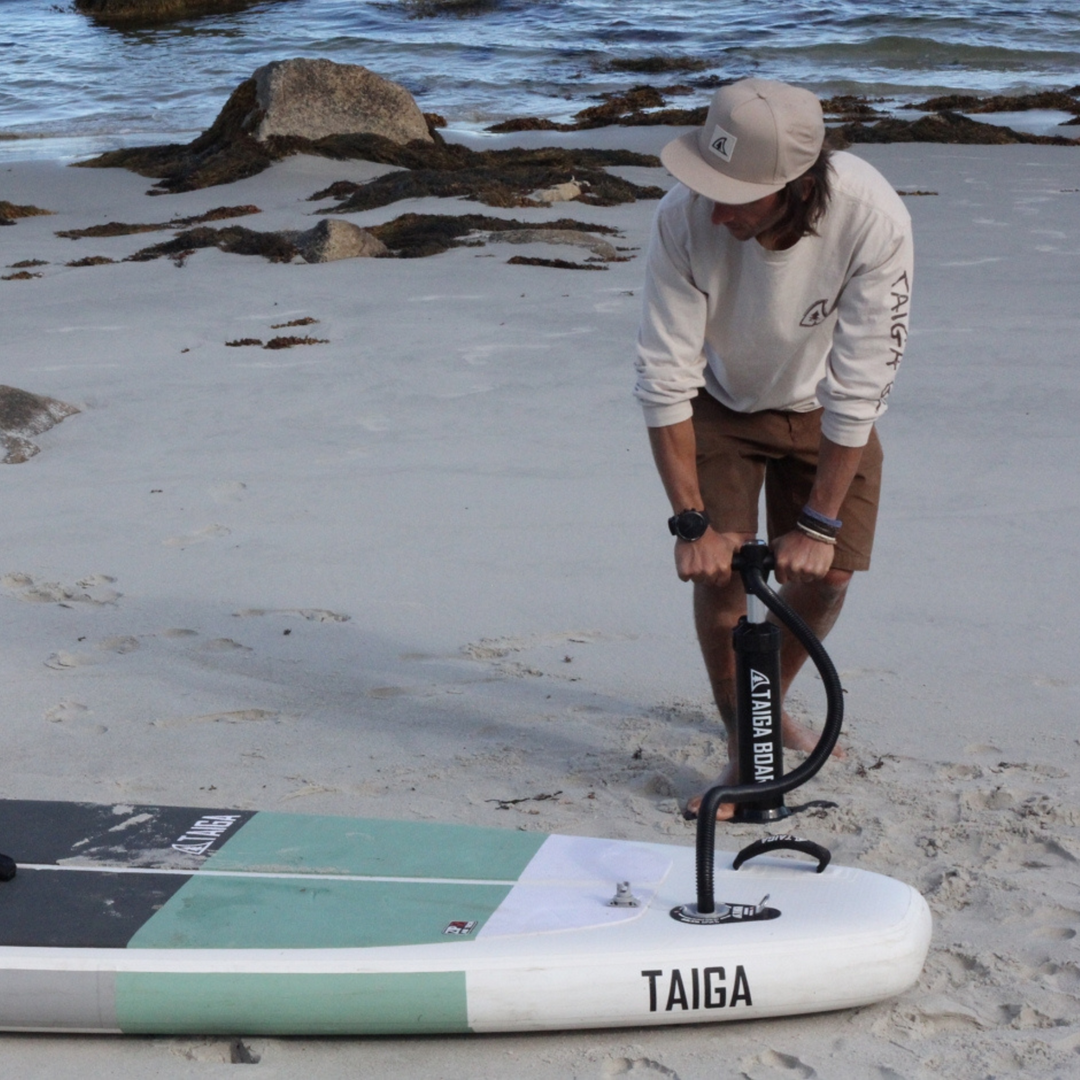

Buying a paddle board shouldn't only be about the style or how it looks on your Instagram feed!
One thing is for sure, the use of real wood in the construction of our hard paddle boards gives them a natural look that resembles a masterpiece of art (damn).
As for our inflatables, we work hard to make them as good lookin' as our hard boards! Our hard boards remain the top contender in our hearts though.
Category winner: hard paddle board
Finally, something we cannot undermine: the price. Many paddlers choose an inflatable board because it is generally less expensive than a hard one. Yes, that's true. But it's important to remember that less expensive doesn't necessarily mean it's a better purchase. It may be better to invest a little more for a product that meets your needs and that you will use for many years. You'll quickly fall in love with these boards, we're telling you!
Category winner: inflatable paddle board
It all depends on your needs, your lifestyle and your interests. To help you, we have prepared a nice recap in the charts:
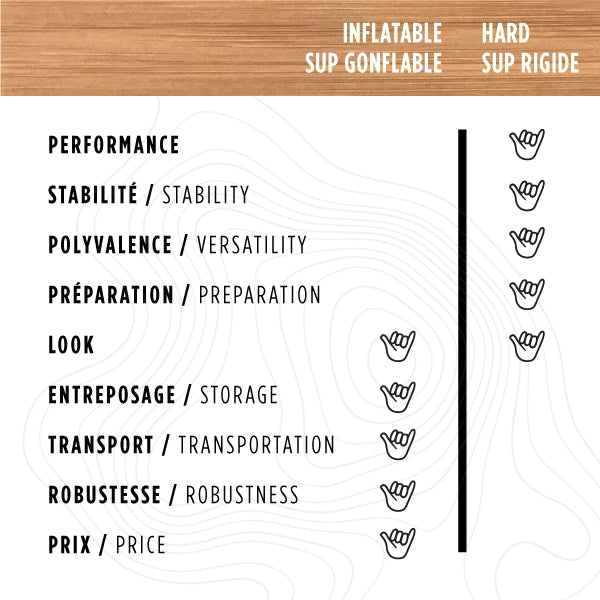
Want to learn more about the price difference of inflatable paddle boards?